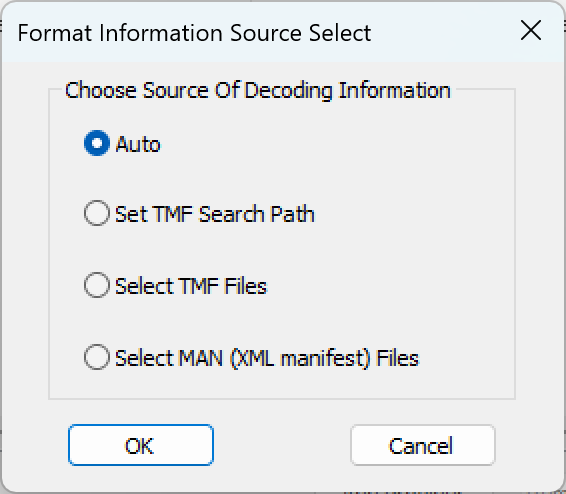1. 故事
-
开发虚拟显示器驱动时,打太多日志到 DbgView,结果导致驱动被底层主动杀死。
-
有一天,Linux 和 Windows 驱动都精通的钧叔,突然和稣吐槽,WPP 太擸𢶍。
2. 问题
-
OutputDebugStringA 太慢了!
-
WPP 太乱了!
3. 相关知识
-
ETW(Event Tracing for Windows)是 Windows 操作系统中的一种事件跟踪技术,可以用于记录系统和应用程序生成的事件。ETW 的优点就是性能好,并且同时具备内核态和用户态 API。
-
WPP(Windows Software Trace Preprocessor)是一种用于 Windows 软件跟踪的预处理器,可以帮助开发人员在代码中插入跟踪语句,并生成可用于 ETW 的跟踪消息。即,WPP 基于 ETW,只是做了层封装。
-
TraceView is a trace controller and a trace consumer. 类似于用 DbgView 看 OutputDebugStringA 产生的消息。ETW 产生的消息用 TraceView 来看。
4. 解决
慢的,不用就行。乱的,换个用法。
既然已经有 TraceView,那么我们只需要把 OutputDebugStringA 替换为 ETW 的 API 不就完事了吗?说干就干,先写个简单的 Trace Provider 代码:
1 |
|
打开 TraceView,做好基本配置:


然后,运行以上 C++ 代码,回到 TraceView 界面,能看到捕获到信息,但并没有“Hello ETW!”,而是写着“解码错误 1168”。

到此,恍然大悟,原来 ETW 太底层,所以才有 WPP 定义一系列规范来使用 ETW,只不过 WPP 太老,不好用了。有没有一种不需要 pdb/man/tmf 的使用 ETW 的方式?
有的。它就是 Windows 10 新增的 TraceLogging。
Windows 10 introduces TraceLogging which builds on ETW and provides a simplified way to instrument code for native, .NET and WinRT developers.
TraceLogging is a system for logging events that can be decoded without a manifest. On Windows, TraceLogging is used in user-mode and kernel-mode to generate Event Tracing for Windows (ETW) events. TraceLogging builds on Event Tracing for Windows (ETW) and provides a simplified way to instrument code.
参考微软给的例子就很容易理解并上手:C/C++ TraceLogging Examples
 如果您使用微信,也可以关注公众号 UMU618,在公众号文章里评论。
如果您使用微信,也可以关注公众号 UMU618,在公众号文章里评论。